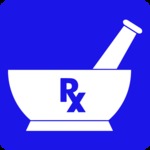 Chemotherapy drugs were recognized as dangerous material even decades ago when people were more cavalier about waste management issues. At a time when when most waste meds were flushed down the drain, waste chemotherapy drugs were treated as hazardous waste.
Chemotherapy drugs were recognized as dangerous material even decades ago when people were more cavalier about waste management issues. At a time when when most waste meds were flushed down the drain, waste chemotherapy drugs were treated as hazardous waste.
Chemotherapy drugs are used for cancer and sometimes other diseases. Most chemotherapy drugs are cytotoxic: they kill cells. Some of the newer anti-cancer drugs work by a different mechanism, but the bulk of chemo medicines kept at the typical hospital or oncology clinic are cytotoxic. That means waste containing those drugs is hazardous waste.
In a hospital these drugs are most often employed in oncology and radiotherapy units. Chemotherapy-containing waste rarely makes up more than 5 percent of a facility’s waste, but their hazardous nature drives up disposal costs.
Most chemotherapy drugs are delivered in liquid form - often in an aqueous solution. The solution is prepared at the hospital or clinic or doctor’s office. The equipment and disposables used in preparation get contaminated with the medicine. Some equipment can be washed and reused - the wash solution becomes a hazardous waste - and materials that cannot be reused are sent to the waste stream.
The pharmaceutical industry has reverse distribution so that many unused medicines can go back to the maker or distributor. This alleviates the healthcare establishment of having to deal with bulk chemotherapy medicines that are not needed. Another alternative is a cancer drug repository. Check to see if there is one in your area.
There are two types of trace chemotherapy waste:
If the chemotherapy agents are visible to the naked eye, the waste is bulk chemotherapy waste. Spill cleanup materials are included in this category.
The UK's National Health Service publishes (online) a chemotherapy waste data collection and evaluation tool.: https://www.england.nhs.uk/publication/chemotherapy-waste-data-collection-and-evaluation-tool/
Materials and tools used to clean up a spill of chemotherapy or chemotherapy-contaminated waste must be treated as hazardous waste.
Bulk medicine makes up a small portion of waste classified as chemotherapy waste. Most of the waste is paraphernalia used in the storage, preparation, and administration of chemotherapy to the patient, and sometimes bodily wastes from patients. So your chemotherapy waste may include
They certainly can be, but remember there are two categories of RCRA hazardous waste: listed waste that contains one or more constituents on the list in the RCRA law, and characteristic waste that is corrosive, flammable, reactive, or toxic. The RCRA lists - P, U, F, and K - were written in the 1970s when the law was passed. At the time, there were few chemotherapy drugs compared to what we have today. Chemotherapy drugs explicitly written into federal code are Arsenic Trioxide (P012), Chlorambucil (U035), Cyclophosphamide (U058), Daunomycin (U059), Melphalan (U150), Mitomycin C (U010), Streptozotocin (U206), and Uracil Mustard (U237). Diethylstilbestrol, which is no longer used as a chemotherapy drug, is also on the U-list.
 Dozens of other waste chemo agents are classified as RCRA waste under the toxicity characteristic. If you aren’t sure, just assume all chemotherapy waste is hazardous waste. But don’t mix it with other hazardous waste as the process for treatment may be different.
Dozens of other waste chemo agents are classified as RCRA waste under the toxicity characteristic. If you aren’t sure, just assume all chemotherapy waste is hazardous waste. But don’t mix it with other hazardous waste as the process for treatment may be different.
RCRA does not explicitly mention trace waste or distinguish between bulk and trace quantities. But chemotherapy medicines are so powerful that even trace amounts can affect a person. Contaminated items pose a health threat to workers and a risk to the environment. The pharmaceutical industry has developed closed transfer systems (e.g. PhaSeal) to reduce the risk of release.
Handling chemotherapy drugs and chemotherapy waste can pose hazards. We recommend pharmacies have a dedicated unpacking area for these medications when they enter the facility, and we also suggest a dedicated area for packaging waste for disposal.
Do not put chemotherapy-contaminated materials in an autoclave. The temperature is not high enough to reliably destroy the drugs. Few medical facilities can treat chemotherapy on site. If you generate chemotherapy waste at your facility, you probably want a competent waste management company to remove it. This type of waste must be treated before disposal. Incineration is ideal, but chemical treatment - denaturing - is sometimes employed. As the generator, you bear legal responsibility for the waste until it is disposed of, so you have an interest in making sure it is treated effectively. Working with waste management professionals can ease your mind.
